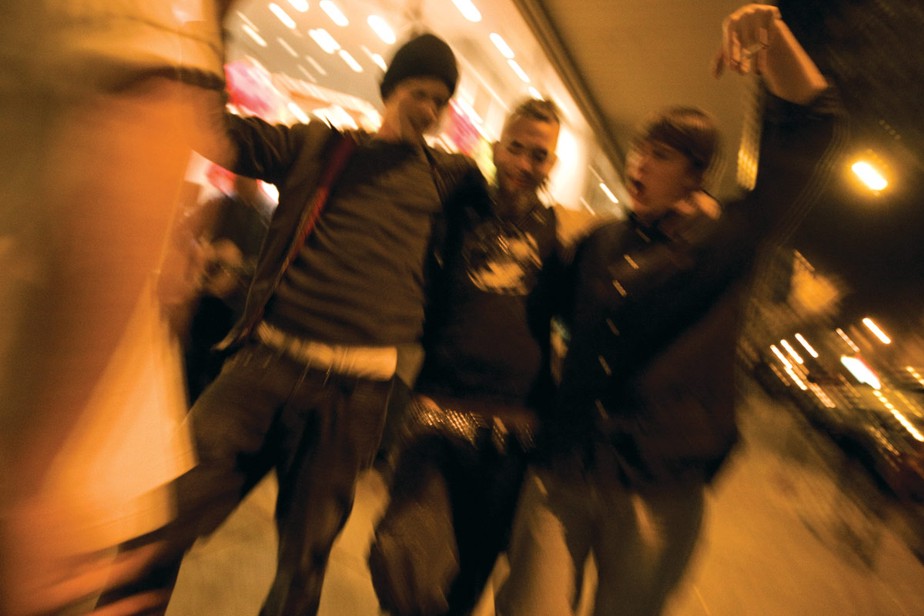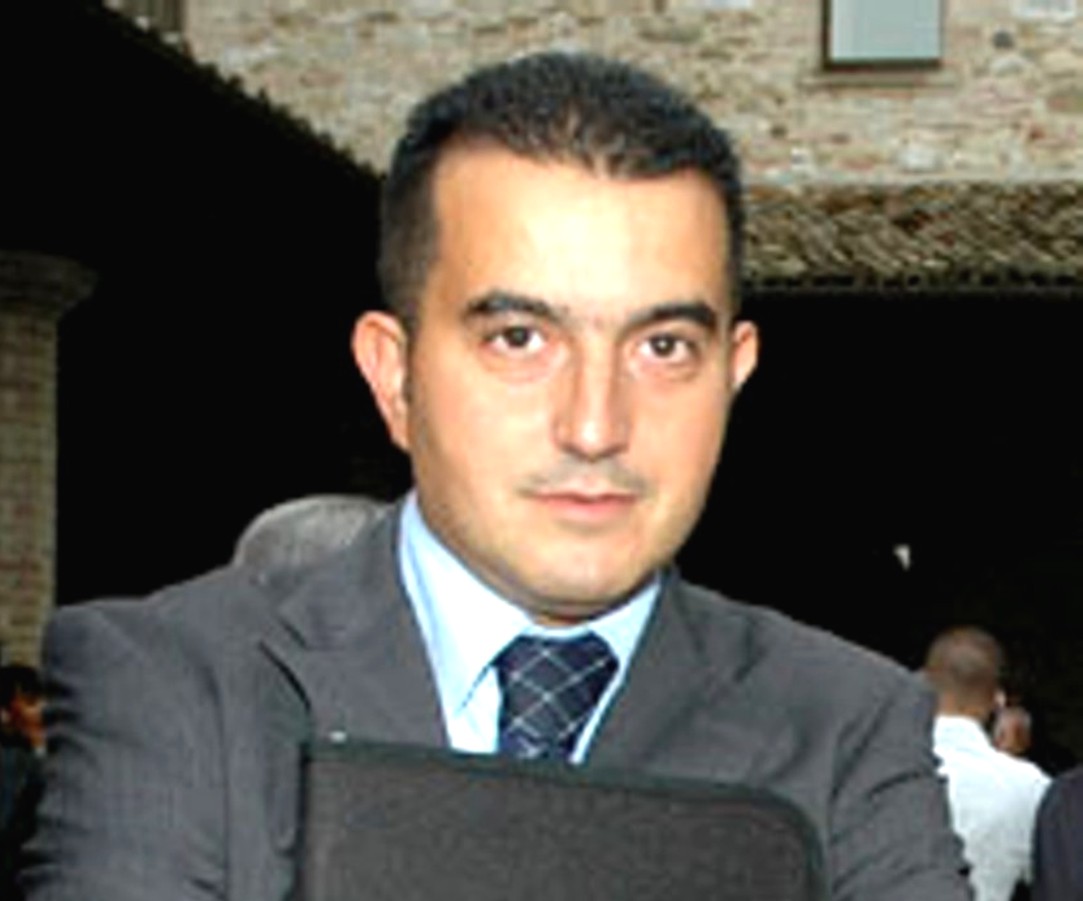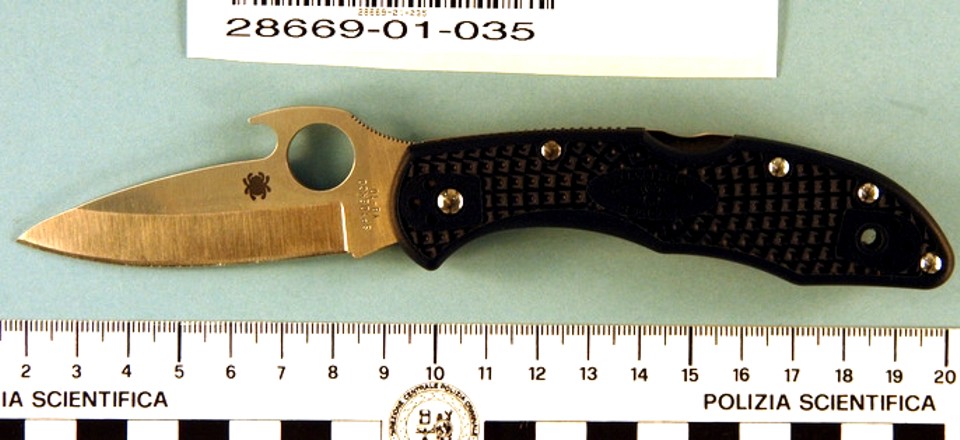
Category: The psychology
Saturday, March 05, 2011
Thoughts On Meredith’s Tragic Case And Its Significance In The Bigger Scheme Of Things
Posted by Saskia van der Elst
As one of the regular commentators on this forum once pointed out, the question we all are trying to answer regarding the pointless murder of the talented and beautiful Meredith Kercher in Perugia is: What is it, that keeps on drawing us to this case?
We all have our own reasons. According to me, a murder case seldom has so much in common with an old school murder mystery, or “whodunnit”. A victim that you instantly sympathize with, several suspects, each with their own particular background, ethnic origin and possible motives, a tragic event taking place on the day of the Death, a charismatic prosecutor, who himself is the center of some controversy, and all of this set in the stunningly beautiful medieval hilltop town of Perugia, with its two universities, its relatively small population and its many temporary residents, studying and partying in the small town center.
All are ingredients for a captivating story: a small universe, that can easily be explained to an outsider and once you heard the beginning of the story, you crave more. More information, more depth, more color. For those that have a normal, healthy brain, there comes a point in any murder mystery where you are convinced of the guilt of one or more of the characters in the story and as you near the end of the story, there might be an unexpected twist, but you can rest assured that you will find out who did it.
Of course, in real life stories don’t follow formulas, most of the time they don’t have a definitive ending and in the case of the murder of Meredith, the book is not closed. The three perpetrators of the crime have been convicted to a total of 67 years in jail between the three of them, but all three maintain their innocence. We all know that three cannot keep a secret, so it is a matter of time until one of them reveals more about the exact events that took place on the 2nd of November in 2007.
Each of the three perpetrators will go through a process of maturing in prison. Once they feel they have paid a significant price for their crime, they may realize the graveness of they crime and realize that they made bad decisions in their past. Not until that moment, they can find redemption and may feel the need to let the world know that they have changed as a person. All three perpetrators were immature in their own way when they committed their crime, so it might take a while for them to mature enough to be able to face reality.
Rudy might be the first one to reach that point, since he is more or less an orphan, with no controlling relatives, friends and others with vested interests in the lies that have masked the truth. Nobody will lose face if he decides to confess his participation in the crime. The same thing, but to a lesser degree, is true for Raffaele. Since he never even cared about clarifying all inconsistencies in his stories, he implicitly has already admitted his involvement. He too, doesn’t affect many people if he opens up and gets clean. The only close relatives he has are his father and sister and they have not publicly expressed a strong believe in his innocence.
Amanda is in a much more difficult position, because of the amount of people that was mobilized to defend her. By now she has been the income generator for quite some people and although nobody envies her parents, they have a clear mission, that keeps them occupied and that gives their lives meaning. The moment Amanda would confess her involvement, the parents would be forced to exchange the “free my innocent daughter” banner for one that reads “I raised a murderess that is serving two and a half decades in a foreign prison”.
On top of the above, the process of coming clean might be a slow one, because all three suffer from uncertainty about how the other two are doing. That uncertainty might cause postponing the advance, until they are forced to speak up, because one of the others did so first.
The result for those that are following the case is that we know we don’t have all information yet and for us to fill in all the blanks and be able to understand what exactly has happened to Meredith we need that information. Until we have it, we cannot accept the story as is as it leaves us unsatisfied. Of course we are talking about a true story here and not about a work of fiction, but for the rational part of our minds that doesn’t make a difference.
Friday, January 28, 2011
Why Don’t Perpetrators Say They’re Sorry? A Psychoanalytic Perspective
Posted by Carol Poole

[Image: In downtown Leeds, a city in which Meredith was extremely happy]
A disclaimer: I do not intend these remarks as commentary on any specific individual(s). I’m offering them as food for thought, for anyone who (like me) struggles to understand both the human capacities for destruction and for healing
Why don’t abusers apologize when they’re caught? Even when it would be in their own best interest to show remorse?
Of course, there are exceptions. Sometimes people own their crimes and take responsibility. The less shameful the crime, the more likely this is. As Johnny Cash sang, “I shot a man in Reno/Just to watch him die.” When he sang at Folsom Prison, no doubt his audience nodded along, sharing a general sense that shooting or getting shot in a bar is the kind of thing that any man might find himself doing on a bad day.
But no one sings about molesting a child. Or rape. Even the Green River Killer, Gary Ridgway, was offended when officers suggested he had raped the women he murdered—women, most of them young, all of them working the hardest of jobs and deserving much better.
So there are some crimes that no one brags about—or apologizes for, either, which is a shame, since the survivors and loved ones are left to try to understand what has happened. In my work as a psychotherapist for trauma and abuse survivors, I seek answers for this difficult question: how can people do such terrible things to others, and show no remorse?
This is especially hard when the perpetrator seems like a nice, “normal” person, a respected member of society. We can more easily understand when an act of violence is committed by someone in the grip of a psychotic delusion. It’s just a terrible accident then, a case of being in the wrong place at the wrong time. Likewise, we don’t lose sleep trying to understand a coldly sociopathic attack: we don’t have to wonder why a mugger steals a purse.
But it baffles and hurts us deeply when someone we should have been able to trust commits violence against one of us. Especially when the crime is covered up by denial, adding injury to injury by robbing the injured parties of something they need in order to heal: acknowledgment of the truth of what’s happened.
Dori Laub, a psychoanalyst who survived a childhood in concentration camps in the Holocaust, observed that when our faith in goodness is shattered, we feel abandoned by the world of goodness, and lost in a kind of desert of the soul, a deathly state that feels empty of all life except for the malign presence of the perpetrator.
And he pointed out something he must have learned by experience: there is something about trauma that messes with our ability to recognize it when it’s happening. Our minds sometimes cannot see it, refuse to put together the picture that is right in front of our eyes, perhaps because we fear that if we see the truth, it will destroy our hope that the world is the good place we need it to be.
This, I believe, is why good people sometimes collude with abuse by refusing to see it. The refusal is happening at such a deep instinctive level that it’s rarely an entirely conscious choice.
And in a sense, it’s also why perpetrators of the worst crimes so rarely own what they’ve done. Research has shown that abusers have a curious relationship with remorse: they may have formidable defenses against feeling guilt, which is feeling bad about what you’ve done. But they are highly prone to shame, which is feeling bad about who or what you are.
The kind of people who are most likely to abuse others are those who are absorbed by a damaged sense of self. They lash out in a crude effort to fend of feelings of being bad, in a kind of magical thinking: If I put the badness in you, it won’t be in me anymore. If I make you hurt, then I won’t have to hurt. To a very childish state of mind, to hurt is to be bad. We all make that equation when we’re very small, but most of us grow a mature sense of self that integrates our many different feelings into a whole picture.
Having a mature sense of self means being able to say, “I sometimes do things that aren’t good. I wish that wasn’t true, but it is. At least I can try to repair the harm I’ve done, and learn not to do it again.” The same sense of integration is what prevents us from acting out our worst impulses. We can safely want to strangle people from time to time, knowing we will never do it.
When someone’s sense of self is so badly damaged that they can be violently abusive, they aren’t able to hold together a whole story about themselves, or about what they’ve done. It’s only after years of therapy (or other means of growth) that such a person might become able to really put together the picture of their own violence, and take responsibility for their actions.
Which means that people who have been harmed by violence have to find ways to take care of themselves and heal, even though the perpetrator has an infuriating, baffling way of seeming not to have been there at all. It’s as though nothing happened.
It’s natural to wish that the perpetrator would be sorry. It would help so much to hear their apology. But there’s a trap, too, in waiting for help from that quarter. It’s no good trying to get such a person to hear you or understand that gravity of what they’ve done. It’s like trying to get a clear reflection out of the fragments of a shattered mirror.
Instead, what helps survivors and loved ones heal is to tend their souls, and work their way back toward everything that makes life full: love, trust, gratitude, hope. Which means finding a way to grieve the losses.
We don’t grieve in the cold shadows of the death zone; we grieve when we remember our love and our hope for the future.
It helps to have a sense of community acknowledging our loss. It helps if we can find a way to bring something good out of the devastation—if we can at least bring some meaning to the loss by letting the tragedy inspire us to do good.
It’s only at the end of the movie, when the mother and child embrace, that we can let down and weep for everything they had to go through to find each other again, and weep too for the ones we miss.
Thursday, January 13, 2011
Claims Amanda Knox’s Confessions Resemble “False Confessions” Not Backed Up By Any Criminal Research
Posted by Fuji

[Above: Perugia’s central police station where Knox, Sollecito and Guede were all interviewed]
Meredith’s case is absolutely riddled with fabricated false myths.
They are now found by the hundreds on some misleading websites, and they simply make experienced law enforcement and criminal lawyers laugh.
For example “Police had no good reason to be immediately suspicious of Knox simply because the murder occurred at her residence”. And “The double-DNA knife is a priori to be disregarded as evidence, because no murderer would retain possession of such a murder weapon.”
One of the most strident and widespread myths is that Amanda Knox’s statements to the Perugian investigators on 5 and 6 November 2007, placing her at the scene of Meredith’s murder, are to be viewed as the products of a genuinely confused mind imbued with a naïve trust of authority figures.
The apparent certainty with which many of Amanda Knox’s most vocal supporters proclaim that Knox’s statements are actual “false confessions” as opposed to deliberate lies is not supported by even a cursory reading of the pertinent academic literature regarding false confessions.
What actually are “false confessions”?
Richard N. Kocsis in his book “Applied Criminal Psychology: A Guide to Forensic Behavioral Sciences” (2009), on pages 193-4 delineates three different kinds of false confessions:
First, a voluntary false confession is one in which a person falsely confesses to a crime absent any pressure or coercion from police investigators….
Coerced-compliant false confessions occur when a person falsely confesses to a crime for some immediate gain and in spite of the conscious knowledge that he or she is actually innocent of the crime….
The final type, identified by Kassin and Wrightsman (1985), is referred to as a coerced-internalized false confession. This occurs when a person falsely confesses to a crime and truly begins to believe that he or she is responsible for the criminal act.
The first problem facing Knox supporters wishing to pursue the false confession angle as a point speaking to her purported innocence is epistemological.
Although much research has been done on this phenomenon in recent years, academics are still struggling to come to terms with a methodology to determine their incidence rate.
The current state of knowledge does not support those making sweeping claims about the likelihood of Knox’s statements being representative of a genuine internalized false confession.
As noted by Richard A. Leo in “False Confessions: Causes, Consequences, and Implications” (Journal of the American Academy of Psychiatry and the Law, 2009):
Although other researchers have also documented and analyzed numerous false confessions in recent years, we do not know how frequently they occur. A scientifically meaningful incidence rate cannot be determined for several reasons.
First, researchers cannot identify (and thus cannot randomly sample) the universe of false confessions, because no governmental or private organization keeps track of this information.
Second, even if one could identify a set of possibly false confessions, it is not usually possible as a practical matter to obtain the primary case materials (e.g., police reports, pretrial and trial transcripts, and electronic recordings of the interrogations) necessary to evaluate the unreliability of these confessions.
Finally, even in disputed confession cases in which researchers are able to obtain primary case materials, it may still be difficult to determine unequivocally the ground truth (i.e., what really happened) with sufficient certainty to prove the confession false.
In most alleged false-confession cases, it is therefore impossible to remove completely any possible doubts about the confessor’s innocence.
The next problem Knox supporters face is that, even allowing for an inability to establish a priori any likelihood of a given statement being a false confession, the kind of false confession which is usually attributed to Knox is in fact one of the LEAST likely of the three types (Voluntary, Compliant, and Persuaded, as Leo terms the three different categories) to be observed:
Persuaded false confessions appear to occur far less often than compliant false confessions.
Moreover, despite assertions to the contrary, Knox and her statements do not in fact satisfy many of the criteria researchers tend to observe in false confessions, particularly of the Persuaded variety:
“All other things being equal, those who are highly suggestible or compliant are more likely to confess falsely. Individuals who are highly suggestible tend to have poor memories, high levels of anxiety, low self-esteem, and low assertiveness, personality factors that also make them more vulnerable to the pressures of interrogation and thus more likely to confess falsely…
Highly suggestible or compliant individuals are not the only ones who are unusually vulnerable to the pressures of police interrogation. So are the developmentally disabled or cognitively impaired, juveniles, and the mentally ill….
They also tend to occur primarily in high-profile murder cases and to be the product of unusually lengthy and psychologically intense interrogations… ordinary police interrogation is not strong enough to produce a permanent change in the suspect’s beliefs.
Most significantly, there is one essential element of a true Persuaded False Confession which in Knox’s case is highly distinctive:
To convince the suspect that it is plausible, and likely, that he committed the crime, the interrogators must supply him with a reason that satisfactorily explains how he could have done it without remembering it.
This is the second step in the psychological process that leads to a persuaded false confession.
Typically, the interrogator suggests one version or another of a “repressed” memory theory.
He or she may suggest, for example, that the suspect experienced an alcohol- or drug-induced blackout, a “dry” blackout, a multiple personality disorder, a momentary lapse in consciousness, or posttraumatic stress disorder, or, perhaps most commonly, that the suspect simply repressed his memory of committing the crime because it was a traumatic experience for him.
The suspect can only be persuaded to accept responsibility for the crime if he regards one of the interrogators’ explanations for his alleged amnesia as plausible.
Knox did not in fact claim drug or alcohol use as the source of her amnesia - rather, she claimed to have accepted the interrogators’ attribution that this was due to being traumatized by the crime itself, and she offers no other explanation for her selective amnesia:
This is from Knox’s statement to the court in pretrial on 18 October 2008 with Judge Micheli presiding.
Then they started pushing on me the idea that I must have seen something, and forgotten about it. They said that I was traumatized.
Of course, Knox’s initial statement went far beyond being that of being merely a witness to some aspect of Ms. Kercher’s murder, as the interrogators at first seemed to believe was the case.
Rather, her statement placed her at scene of the murder during its actual commission while she did nothing to avert it, which naturally made her a suspect.
In other words, in the absence of any of her other testimony which indicated that she was only a witness to the murder, her own self-admitted rationale for providing a false confession was that she was traumatized by the commission of the murder itself.
Perugia judges will be familiar with all of the above and we can be sure that they brief the lay judges on the remote circumstances and incidences of false confessions.
If I were a Knox defense attorney, I would find it to be a far more fruitful line of argumentation to argue that she was simply lying, rather than claiming the supremely unlikely provision of an actual internalized false confession.
Friday, November 12, 2010
Report Students Studying Abroad on Average Double Or Triple Their Alcoholic Intake
Posted by Peter Quennell
American embassies and other nations’ embassies abroad get to hear of hundreds of cases a year of students who got in over their heads.
In the past couple of years, there have been TWO notorious murders by foreign students in Florence alone. Florence is about one hour’s drive north of Perugia. The embassy simply shrugged and moved on as Italian justice worked its careful process through.
Both perps happened to be American, and both were high. There were no cries in those cases of anti-Americanism. Howvever, there was some troubled talk in Italy of the excesses foreign students go to.
And a lot of tightening up by the colleges who send a lot of students abroad, including the University of Washington (Amanda Knox’s college) and Pepperdine University (Steve Moore’s former college - this helped to seal his firing.)
Amanda Knox is one of the rare ones who shrugged off all home-college supervision, presumably with the okay of her parents. Meredith was closely watched over by the Erasmus scheme, which sadly did not save her life.
Now the University of Southern California’s student newspaper carries this report on one root cause of students facing foreign judges.
Students traveling abroad can keep glass half full
By Kelsey Clark of the Daily Trojan
According to researchers at the University of Washington, American college students who study abroad are likely to increase “” even triple “” their alcohol consumption while traveling internationally.
Students over the age of 21 doubled their intake of alcohol from an average of four drinks per week on campus to eight drinks per week abroad, according to a study published in the October issue of Psychology of Addictive Behaviors. The overall increase in surveyed students’ alcohol consumption was 105 percent, while those underage students tripled their drinking with an increased consumption of 170 percent….
By consuming alcohol in excess, particularly in an unfamiliar country, the risks for students are greater than those traditionally associated with a night of drinking at USC.
Though instances of injury, crime and sexual abuse do occur as a result of binge drinking at USC, such severe ramifications are comparatively rare within the university’s party culture. Some of the more prevalent woes are students who slept through class because of a hangover or ruined a cell phone by jumping in a pool.
But students who travel abroad must take additional precautions as the heightened risks include becoming lost, getting pick-pocketed or otherwise taken advantage of.
And of course bumping some poor innocent person off.
Friday, October 15, 2010
Is The PR Campaign Finally Now Pushing Amanda Knox Very, Very Close To The Edge?
Posted by Peter Quennell
Things seem to be getting increasingly tough for Amanda Knox.
We have already posted that she seems increasingly adrift. Now consider all that is about to hit her.
1) Next week a book of interviews with Knox will be release by an Italian politician, Rocco Girlanda (image below), who we hear comes across as more than a little obsessive toward her.
We are told that an active Italian MP is in fact legally forbidden from meddling in an ongoing case, and it seems he started the interviews with Amanda in Capanne without her even realising she was being recorded. Who knows how this book will come across in Italy, and how she will then be regarded?
2) Next week also the slander trial of Knox’s parents, Curt Knox and Edda Mellas, may get under way in Perugia. We have posted repeatedly lately on what seems the real reason why Amanda Knox accused Patrick Lumumba: Sollecito had just destroyed her alibi.
Only very much later did Knox start to claim that she was driven to make her demonstrably false accusation because she was being harrassed by an interrogator. This is supported by no witnesses at all. The tough confident insouciant Amanda Knox who took the witness stand last June did not manage to make this claim sound remotely credible.
In the echo-chamber occupied by such shallow grandstanding self-servers as Steve Moore (Machine’s post below) this belated accusation somehow morphed into Prosecutor Mignini himself leading the harrassment, which was said to go on for hours and hours, with no food, no water, no lawyer, and no interpreter present in the room.
So Amanda Knox herself and her two parents are now facing their separate slander trials - Knox’s own trial will recommence in November. All three seem to be between a rock and a hard place. Either they must look all of the cops right in the eyes and say “Yes you did this” or visibly freeze or melt down emotionally on the witness stand, and end up facing possible legal punishment.
3) The Sollecitos increasingly seem to be going their own separate way. The Sollecito family trial for illegally releasing an evidence video to Telenorba showing Meredith naked at the crime scene (which stirred considerable dislike for them all across Italy) will recommence on 24 February in Perugia. Raffaele’s sister Vanessa, who was fired from her job in the Carabinieri (federal police) for trying to get politicians to use their influence for Sollecito, will also be facing her own hearing.
As we have explained so many times before, Raffaele Sollecito has NEVER endorsed Amanda Knox’s final alibi - that she was with him at his place all night. The Sollecitos do NOT like Amanda Knox or her family, and they have no time at all for the strident anti-Italianism of the PR campaign, which has done them nothing but harm.
4) Amanda Knox is now said to be pretty desperate to talk in person or on the phone with Raffaele Sollecito. This has just been approved. For each, it will be their one approved phone-call a week, and it will be monitored.
Although some of the Italian media have made light of this - that this may be a sign of love’s hot embers - the far more likely explanation is that Amanda herself and the inner Knox team are desperately worried that Sollecito could cut them adrift, and come out at appeal with a show of penitence and even a sort of explanation.
So Knox reaches out to Sollecito now in what seems to be growing desperation.
5) Hayden Panettiere is hanging around in Rome waiting for the shooting of the Lifetime movie to begin, grinning vacuously for the cameras as she thoughtlessly heaps still more pain on Meredith’s family and her friends and shows zero concern for the real victim.
To their considerable credit, Amanda Knox’s own lawyers in Perugia seem to have taken a strong dislike to Hayden Panettiere, and to the timing of the Lifetime movie. We have just now heard that they have said no to a request from Hayden Panettiere to meet with Amanda Knox in Capanne Prison. This film is likely to stir enormous controversy unless it sticks to the facts, and the facts hardly seem to favor Amanda Knox.
6) There is less sign now than there ever was that the US Rome Embassy or the State Department are inclining to intervene, even if there was an obvious way open. They know the case from end to end and they believe last year’s trial was a perfectly fair proceeding. Just a couple of weeks ago the State Department did move actively to help some other Americans in foreign trouble, but in light of the strident anti-Italianism and the Massei Report, it just isn’t going to happen here.
7) The depth and detail and precision of the Massei Report is a nightmare for the Amanda Knox defence team. Even if all the DNA and other forensic tests are repeated, the result are very unlikely to be fully in their favor, and there’s a real chance new tests will work against them.
And now we are hearing that the opportunistic prisoners Mario Alessi and Luciano Aviello, one of who claims he was a cellmate of Rudy Guede who heard him confess, and the other who claims he is the brother of the “real” murderer, may STILL be the defense’s star witnesses at the appeal starting late in November. Both are very much reviled in Italy for their crimes, and each has a known history of lying.
So good luck to the Knox defense team with this one. Their appeal statement seems weak and disjointed. Amanda surely picks up on their despondent vibes, which hardly helps in her own struggle for emotional stability.
***
So what do we ourselves hope for here? We hope that Amanda Knox finally breaks. Not calamitously, of course, but in a totally new direction. Maybe a shorter sentence for her. And certainly relief to the thousands this cruel senseless act toward Meredith has so very much damaged.
Thursday, September 09, 2010
Conspiracy Theorists Follow A Well Known Pattern - They ALL End Up Out Of Steam And Ignored
Posted by Stilicho

[above: conspiracy theorists don’t want you to believe that is an aircraft]
Conspiracy Theories And Those That Surround Meredith’s Murder:
What do the Apollo moon landings, the JFK assassination, the 9/11 attacks, and Meredith Kercher’s murder all have in common?
They have each attracted the vigorous cult-like attention of conspiracy theorists. Despite the cold hard fact that in each case there has been ample documentation to support what might best be called the official story.
We know from independent and highly credible and very respected sources that the Apollo missions were successful, that a lone gunman shot and killed the US president in Dallas, that a terrorist group was responsible for hijacking of four aircraft, that the World Trade Center complex was destroyed by the subsequent fires..
And that Knox, Sollecito and Guede attacked and killed Meredith in her rented room in Perugia on the first of November in 2007.
Among the dozens of similarities between the Meredith case conspiracy theorists and others, we will focus on those made most apparent by the words and actions of those advocating for Knox and (occasionally) Sollecito.
A Commonality: Lack Of Any Coherent Alternate Narrative:
The court was obliged to create a logical narrative supported by the evidence. That narrative, briefly, states that Knox and Sollecito encountered Guede after they found they had no obligations that evening, consumed drugs that lowered their inhibitions, and entered Meredith’s room.
What followed was a sexual assault upon the young British woman, the active participation of each of the three accused, Meredith’s attempts to scream for help, and the silencing of the victim by covering her mouth, throttling her and finally stabbing her in the throat. The three assailants then departed after locking Meredith’s bedroom door.
Her mobile phones and keys were taken by Knox and Sollecito to be discarded in a remote location. Once it was apparent that the authorities had not responded to Meredith’s screams, Knox and Sollecito returned to the cottage to stage a break-in and to obscure as much evidence of their presence as was possible.
Those advocating for Knox and Sollecito have never supplied a coherent narrative to refute the official story.
Similarly, 9/11 truthers have never been able to agree on much apart from their strident belief that the official story simply must be wrong. Various hypotheses have been advanced and withdrawn in the face of objections by scientists, engineers, and even rival truther factions.
There is a no-planer faction that argues there were no planes hijacked and that all the video and film evidence was created in a government production studio. There is a controlled demolition faction that argues government agents secretly wired unknown explosive devices in one of the busiest office buildings in the world while nobody noticed. There are others who believe the leaseholder of the site ordered the demolition because of concerns about asbestos replacement.
When asked how Guede gained entry to the cottage, conspiracy theorists promote three main theories without selecting the one they all agree upon.
They argue that Guede entered through Filomena’s window OR that Meredith let him in the house herself OR that he entered by unknown means and was there before she returned home at roughly 21:00.
Because conspiracy theorists are not constrained by the requirement for a logical narrative they will pick any of the three available and contradictory claims.
A Commonality: An Aversion To Respecting Good Science:
The Apollo moon landing hoaxes have a lot in common with the advocacy sites proclaiming the innocence of Knox and Sollecito.
Apart from the development of the atomic bomb, there has likely been no human technological achievement so intensively documented as the Apollo programme.
Among the many claims of the conspiracists is the position that late-Sixties technology and instrumentation was insufficient or too bulky to allow the moon landings to take place. They compare the size and power of 21st century computing hardware and software with that of 1969 and make their conclusions based on a perceived inadequacy of the previous era’s equipment.
In Meredith’s case there are several advocacy sites that criticise the scientific police on exactly the same basis.
The techniques employed by (mainly) Dr Stefanoni, in determining the presence of Meredith’s DNA on a knife found in Sollecito’s drawer, are attacked partly because the equipment had not been used this way before.
Just to be sure of their position, however, they add confidently that she simply could have faked the results or kept her tweezers in a beaker of Meredith’s DNA accidentally left in the laboratory. It matters little to the unscientific mind of the conspiracy theorist that Stefanoni’s techniques were fully documented and observed by an independent party as required by law.
A Commonality: Lack Of A Credible Alternate Suspect:
Wrongful convictions happen. There are dozens of them documented on a site operated by The Innocence Project, an American advocacy group. Its banner proudly proclaims that 258 convictions had been overturned.
The foundation seizes upon several important facets of wrongful convictions including DNA evidence and improper defence counselling. In almost all the 258 cases there is another common feature: a credible alternate suspect.
JFK conspiracy theorists have never been able to establish a credible alternate suspect - and neither have Knox/Sollecito advocates.
The latter have not yet gone so far as to accuse the Mafia, Fidel Castro, the Teamsters Union, LBJ, Nixon, the CIA and a man carrying an umbrella in Dealey Plaza. But their attempt to establish Guede as the sole perpetrator accomplishes the same thing.
Just in case the ‘lone wolf’ doesn’t make any sense, they are not beyond implicating even Filomena, falsely claiming that it is only her word against that of Knox that Meredith did not normally lock her bedroom door.
There was only one attempt to identify an alternate suspect and that was made by Knox herself. She told police investigators that Patrick, her boss, was the killer.
She is one step ahead of those proclaiming her innocence; she knew better than they that without another explanation it is she and Sollecito who remained the prime suspects. She also knows, more than her supporters, that naming Guede instead would invite reciprocation.
Conclusions About Conspiracy Theorists
As briefly illustrated above, the length and depth of those being falsely implicated by the mostly anonymous Knox/Sollecito conspiracy theorists, untethered by the 80,000 pound gorilla in the room, the Massei Report, now knows few bounds.
This has now reached such levels of absurdity that they are increasingly being laughed at or, for the most part, ignored. Nobody - really nobody - in either the Italian or American governments is paying them even the slightest attention.
Meredith’s case is showing to the clear-thinking and objective world that Italy has an enviable justice system, that it is very careful and very humane, and that its scientific and forensic techniques are among the vanguard in applied criminal research.
And with no obvious way of obtaining special gains for themselves (or for that matter of hitting back against the anonymous attacks) the very fine police and investigators and prosecutors and judges and juries in Italy are doing the very best they can for Meredith.
Tuesday, May 25, 2010
The Chilling Killing Propensities Of Sollecito’s Various Knives
Posted by SomeAlibi
The few rather puerile websites trying to make the case that Knox and Sollecito were framed all have this one thing in common.
They are all of them a mile or more wide on the facts of the evidence - but only a millimeter or so deep.
Time and again on some point of evidence TJMK and PMF have gone far, far deeper than they have - and from then on, on that particular point, deafening silence is quite usual. Here is one very good example, on TJMK, highly incriminating in itself, and highly suggestive of when and how Edda Mellas first realised her daughter was guilty.
On that point of hard evidence, almost enough to incriminate Amanda all by itself, there has never been any real comeback. The PR campaign’s Wizard of Oz moves on.
Now we advance another in-depth analysis. This time it focuses on the really deadly nature of Sollecito’s various knives, and we’ll await the comeback if any with interest.
In effect, the deniers’ argument made is that Sollecito is not a collector or an aficionado, just a young man who might need to cut an apple with a pocket-knife. And he’s certainly not a hardcore knife collector, collecting fantasy-wish-list knives.
Carrying a pocket-knife above a certain size in public is illegal in Italy. But ignoring that technicality for a minute, let’s examine the knives of Raffaele Sollecito which were impounded during his arrest. Three knives, moving up in degrees of interest, not counting the very large knife prosecution witnesses identified as the murder weapon.
Knife Three
Take a look at the image up the top here. This knife actually hung above Sollecito’s bed.
It is a replica combat knife. The heavy t-bar protection is designed to protect the hand of the knife-user from slipping onto the blade when being used to stab another person, as well as to protect the user against another blade.
Blood grooves exist for only one purpose - as they imply, they are there for when one stabs someone deeply with the knife: they allow the blood to run out down the grooves. This breaks the seal and suction of the enclosing wound around the blade which makes the knife far easier to withdraw
That knife is specifically designed for stabbing people as well as cutting sentries’ throats etc. The female arm in the picture is Amanda’s by the way (you can find the zoomed-out version showing all of Amanda in the PMF gallery), as it was taken when she was being shown the knife in court.
She must have recognized it, of course, since it was from Raffaele’s bedroom, and would have been a rather noticeable discussion piece within view whenever Knox was in the room or laying on the bed.
Many teenagers and young adults put the objects of their highest interest and infatuation, from bands to film-stars, on their walls. Raffaele chose to put a knife designed for killing people on his wall.
It would be a lurking and incongruous presence on a small student-sized bedroom wall in the minds of the vast majority of people. The question of Raffaele’s degree of attraction to knives such that he actively chose to mount a replica combat knife on his bedroom wall doesn’t appear to need much further discussion.
And yet, it’s actually only less than a third of the equation as it was only a replica. Now let’s turn to two real knives - his so-proclaimed pocket knives - which Raffaele confirmed in his own words that he carried on him every day for years, and which tell a more subtle and deeper story.
First, consider what is the meaning of a pocket knife to you.
The phrase “˜pocket knife’ has been translated from the Italian from the transcripts / press coverage. For many, including myself, this will have conjured a mental image of a Swiss Army type knife or a simple blade and indeed this is the prevalent definition of a conventional pocket knife.
Let’s actually have a look at Raffaele’s “pocket knives” courtesy of pictures posted by poster Jools on PMF. These knives were impounded, one from the apartment and one, unbelievably, from Raffaele’s person at the Questura.
In the case of the latter, even Raffaele saw this as a devastating “own-goal” as we can read from his diary entry of 7 November 2007; “I’m not even able to offer guilt, given my deep fu**ing stupidity for the fact that I smoke cannabis I even forget what I have eaten and also for that I carry behind a knife to nock the tables and the trees and I carry it so often that I brought it also to the police headquarters.”
Knife Two
This is a 2.9 inch blade drop point, near spear point knife. At first glance (apart from the mark on the clip which should be ignored and was benign), the deniers camp might say “Well, look at it - it’s just a pocket knife even if it looks a bit sharp and so on ““ look, it’s even got a cute clip for the pocket, like on a pen.”
Let’s start there. The clip is actually a reversible one ““ it can be taken off and re-screwed to the knife to the user’s side / orientation of preference. This is already a proper knife rather than a cheap shop pick-up.
More obviously, the half-serrated edge to the blade for cutting is an active design (and purchase) feature.
Third, the “˜grind’ on the top the blade shows an aesthetic sensibility to the design but also serves a functional purpose for a cutting or stabbing use in terms of reducing friction.
Fourth, the serrations or (quite aggressive) “˜jimping’ on the top of the handle, just behind the blade are there to provide thumb grip.
Quite a lot of design features on this knife for a casual “pocket knife” one might think.
Which leaves us with the odd bar code thing at the top edge of the blade and the indistinct logo on the blade. Let’s see what that logo is with a little enhancing;
“˜Brian Tighe Design’. Brian Tighe?? Google sets us straight on who he is.
“You’d need a calculator to count the number of custom knife-makers who have jumped into the tactical fray over the past five years. You can tally the cream of the crop on two hands, being sure to earmark one of those digits for knifemaker Brian Tighe. In a matter of just a couple of years Tighe (pronounced “Tie”) has risen from the rank and file of edged weapons artisans to the rarefied air of the top 10 elite.”
A look at Tighe’s site shows that his own company’s knives sell for 500 dollars and up. He is a globally feted knife designer whose wait list for his knives was as high as seven years at one point.
So the design of the knife here is actually that of a noted master knife maker. Almost something one might collect, one might say. As loaded as Papa Doc Sollecito is, did Raffaele really spend over 500 dollars on such a knife?
Well no, actually, he didnt need to. This is a Columbia River Knife & Tool produced 811x series knife bearing Brian Tighe’s name. CRKT are a dedicated knife company who specialise in working with the world’s leading knife designers and producing the knives for a bigger market but still as proper aficionado pieces.
At this level of knife, there are extensive magazine, web and “˜user’ reviews. Knives like this are tested for resilience and sharpness including things like edge-on paper-cut tests where paper is cut through just like a razor from the side of a piece of paper held by one hand.
Such a knife is able to catch the edge of the paper and then slice straight through the width of the paper side-on without any tension in the paper. That’s what a knife like this is capable of. A “pocket knife” to me sounds like something picked up for 10 or 20 euro. The current model that replaced Raffaele’s now out-of-series model sells for about $80 at retail. Here’s the actual 2004 model that Raffaele had i.e. the same as the one above;
Worth looking at that for a second or two… Oh the bar code? It’s not a bar code, it a rectangular thumb stud you flick the knife open with. When you do, the knife goes to a locked position unlike many “pocket-knives”. In English speaking knife circles, these knives are not generally referred to as pocket-knives but are called “Tactical Knives” which are a cross-over of usage knives for outdoors / cutting etc but also for personal “protection”.
So, in addition to the wall-mounted replica combat knife, one of Raffaele’s daily carries (see diary / testimony) was a designer thumb-flicked locking tactical knife with jimping, top blade grind, switchable clip and a razor sharp edge costing about 80 bucks. That you can only carry in your pocket. Illegally. Some apple-cutter.
Let’s take a look now at the most worrying knife of all…
Knife One
At first glimpse, this “pocket knife” looks quite martial arts like, given the hole and the weird top edge of the blade and the spider logo.
The logo marks this as a Spyderco knife ““ a large premium knife manufacturer of tactical and many other types of knives. This particular model is a Delica4 Emerson Opener retailing for about $109.95rrp. Of particular note about this knife is the hole and the top edge. The hole, a Spyderco feature, allows a thumb to flick the blade open very quickly. This knife is about speed.
But actually the thumb hole is not the real speed feature ““ that is reserved for the top edge curl.
This is a truly specialist feature known as an Emerson Opener or “wave”. The idea is that the curl in metal catches on the edge of a pocket edge on drawing the knife and opens it immediately (see videos below).
This is a speciality feature licensed from Emerson knives ““ Emerson being another feted “˜name’ knife designer. The wave is only present on two of Spyderco’s 330 knives listed on their website ““ the Delica and the ¾ inch larger sister knife the Endura (“the best self defence knife in the world” according to one enthusiastic teenager on youtube). That’s how specialist it is.
The job of the wave feature is to provide the fastest opening knife in the world bar none ““ faster than a flick or spring knife in fact. This video (many similar to be found) gives a rather disturbing insight into what the real attraction of owning this knife is to a hardcore knife knut like Raffaele; (remember when you watch this for the first time that the knife is closed inside that pocket and also enable the sound on the embedded player below by clicking off the mute)
If I thought my son had a penknife, but then actually saw him with this, we would be having a very long chat..
“Enough!” the deniers say?! “You’ve still got it in for Raffaele haven’t you?” they say?! Despite the replica combat knife on the bedroom wall, the designer Brian Tighe Design CRKT drop-point and the Spyderco Delica4 with wave design)? “You’ve used prejudicial phrases like “hardcore knife knut” haven’t you?” they say?!
Sorry, but don’t look at me. They’re not my words.
They’re the words of Spyderco itself on its own webpage. See here and below.
Raffaele was out to impress Amanda and by his own admission both obsessive about her and a hardcore stoner. He also thought knives - proper knives with exclusive features by name knife designers not pocket knives were fascinating.
As with all of this case and any case, you REALLY need to look at the detailed evidence.
The overwhelming prevalence of skin-deep level of analysis / downplaying of this case by much of the deniers camp will lend and always has lent itself to people dismissing serious evidence as inconsequential based on their lack of understanding of what actually is in question.
The “mere pocket-knife” impression of Raffaele’s interest in knives is a clear case in hand. Raffaele’s father testified in court that his son carried a pen-knife. Some pen-knives or pocket-knives these really were…
As always with this case, when you take the time to look at the real detail, the reality you find is something far more disturbing…..
Monday, May 03, 2010
From The Book Darkness Descending: The Insights On Knox And Sollecito
Posted by Peter Quennell
This is Hamburg above. And that is Berlin and its parliament (the Bundestag) below.
Amanda Knox speaks German and she spent several months in these two cities, staying for some weeks in in Hamburg with her relatives, and several days in Berlin, before moving to Perugia to start her study period there.
Darkness Descending is the book on Meredith’s case by two British writers from which we excerpted on Meredith a few days ago.
As far as we know the writers did not visit Seattle, and their focus is more generally on Italy and to some extent the UK. But they did offer this brief take on Amanda Knox, and also one on Raffaele Sollecito.
**********
From Darkness Descending by Paul Russell and Graham Johnson (Pocket Books) pages 291 and 292
Meredith had enjoyed making the pop video with her University of Leeds friends, but Amanda’s summer job, before travelling around Europe and going to Perugia, had not been so successful.
A politically well-connected uncle in Hamburg had got her an internship to die for - a job working for a German MP at the Bundestag. Kindly Uncle Uwe also set Amanda up with a flat on the .outskirts of Berlin.
Astonishingly, two days later, his seemingly ungrateful niece walked out on the job without telling anyone, moaning that she had nothing to do and she wasn’t sure if she was getting paid. Again, money was a big feature in her thoughts.
She’d spent most of the time reading Harry Potter and showed no curiosity about how the parliament or the high-powered people in there worked. She ignored conversations about its history and architecture.
After walking out, she spent her time drinking wine in the local bars and reading more Harry Potter.
Two days later she left Berlin for Hamburg, where her uncle was waiting for her. He was furious - she had let him down.
It seems Amanda craved excitement on her terms, usually based on getting drunk and goofing around.
Her friends said she simply feared boredom like any young girl. She showed a healthy streak of youthful carelessness, they said, no worse or better than anyone else. A video posted on YouTube showed her drunkenly giggling in a friend’s kitchen after downing shots.
On campus, back in the US, Amanda had been fined for being drunk and disorderly at a party held in a fellow student’s house. During the incident she had also insulted the police.
However, her defenders gave another version, portraying a magnanimous Amanda. They said that in fact she was courageously fronting up for her underage friends, who were in no state to talk to the police; she was the only one sober enough to handle the situation.
A big plus in her character assessment, they said, possibly displaying a sense of chivalry that would later get her into deeper trouble in Perugia.
Despite her college party lifestyle, there was no denying that Amanda was clever and that she could compartmentalize her life.
She made the Dean’s List, an elite commendation of the University of Washington reserved for the institution’s brightest students, and an honour that would ultimately qualify her for a prestigious and sought-after place on the study-abroad exchange programme.
If Amanda wanted something, she would go all out to get it, no messing around.
Raffaele Sollecito’s later years were quite different: he seemed to laze around and evade responsibility.
He posted pictures of himself on the internet wrapped in blood-covered bandages, brandishing a meat cleaver, and wrote a weird story to go with the images. In a blog he expressed satisfaction at once being lodged in the same hostel as the infamous ‘Monster of Foligno’, a murderer who slaughtered two youths in the 1990s.
And yet his new-found fascination with gory horror and violent comics would have surprised the friends he left behind at Licea Scientifico Einstein secondary school at Molfetta.
They said Raffaele suffered from excessive softness - his kickboxing instructor recalled that he even hesitated when kicking out, for fear of hurting the hardened expert.
***********
A few interesting insights there, though we could use more on Sollecito. For most of it, this is a pretty good book, the weak part being the closing analysis of the evidence. Two small corrections.
- The house where the notorious rock-throwing party took place was where Knox herself was living at the time. See here.
- Knox was not on an official University of Washington study-abroad program, as the university has rather anxiously tried to make plain. See here.
If Knox had indeed been on a proper study-abroad program - something many caring parents actually insist upon - her behavior might have been more restrained. She may not have moved in with Sollecito for one thing.
She may not have hit the drugs so hard. And she would not have run so desperately short of money, just when Patrick was apparently about to hire Meredith to replace her. No monthly checks were arriving from Seattle.
Maybe the second correction is not such a small one.
In fact, it is a pity that no writers have really explored all of this - there is, if anything, a surfeit of motives in this case, and the writers might be able to narrow them down.
Although he went to highschool in Molfetta (bottom shot here) and the book is correct on that, Raffaele Sollecito actually comes from Giovinazzo which is ten minutes drive south along the coast.
Both are north of Bari, where his father practices medicine.
Wednesday, April 07, 2010
The Transcript Of Today’s Online Chat Session With Barbie Nadeau Of The Daily Beast
Posted by Peter Quennell
Lucas Wittmann:
Hi, I’m the Books Editor at The Daily Beast and I’m delighted to welcome Barbie Latza Nadeau and our readers to discuss her new book, Angel Face…
BARBIE LATZA NADEAU:
I’m Barbie Latza Nadeau. Welcome.
[Comment From kcolorado: ]
how was your sense of who she is affected by seeing her in court everyday? Have you spoken with her directly?
BARBIE LATZA NADEAU:
Seeing Amanda Knox walk into the courtroom every day was very important in understanding how she interacted with her lawyers and her family, and in understanding how the jury perceived her. Amanda has not yet given any one-on-one interviews so no, I have not spoken to her directly.
Lucas Wittmann:
Just so you know we see your comments and will publish them live as Barbie is ready so please keep them coming…
[Comment From Kevad: ]
You have also stated in tv coverage that “we still do not really know what happened in that room”, is that how you still feel?
[Comment From stint: ]
Great job with book, Barbie. I really enjoyed it.
BARBIE LATZA NADEAU:
Yes, after over two years following this case, none of us know exactly what happened in Meredith’s bedroom that fateful night. No one has confessed to the crime, so until someone does, we will not have a clear understanding of the exact dynamic of the murder.
[Comment From Guest: ]
How do you think your journalism during the trial affected its outcome?
BARBIE LATZA NADEAU:
Thank you. I’m glad you liked the book. My hope is that it provides perspective of this complex case.
BARBIE LATZA NADEAU:
I don’t think that any of us who covered this trial as journalists had a direct impact on the jury’s decision. We were not in the deliberation room.
[Comment From Wade: ]
Why in your opinion did the seattle media frame the events as they did
BARBIE LATZA NADEAU:
I think that many of my colleagues in the Seattle market did the best job they could with the information they had. Their primary source was the Knox family, so their coverage was affected by that. When members of the Seattle press came to Perugia, they did not speak Italian and had a difficult time following the court sessions because there was no translator. Those of us who live and work here in Italy often helped the American press as best we could.
[Comment From stint: ]
Regarding earlier comment. Since Knox Family PR firm *very* closely controls any and all media contact with themselves, and they have reportedly blackballed any reporters even seen *near* you, do you really think you might interview Amanda in the future
BARBIE LATZA NADEAU:
I have hope that Amanda might want someone objective who understands Italian to conduct an interview with her at some point down the road. But because I have been skeptical, I am fairly sure I am not high on the list of interview candidates.
[Comment From mnh12121887:
But why did the American media take the Knox family version so much on face value without even trying to look deeper?
BARBIE LATZA NADEAU:
I think that the economic crisis has played a role. Many bureaus have been closed across Europe and it would have been a major expense to send a correspondent to Italy for such a long trial. I think that had there been a larger Italian based press corp it would have made a difference in coverage.
Lucas Wittmann:
Let’s explore now the facts of the case.
[Comment From Guest: ]
Do you believe Knox’s assertion that she was abused during her final interrogation?
BARBIE LATZA NADEAU:
I think it depends how you define “abused.” If you mean to ask if she was flicked on the back of the head (which is a cultural norm here in schools and in criminal investigations), then yes, that very likely happened. If you mean to ask if she was abused in the way the American police have been caught on CCTV abusing detainees, then no, I do not think she was abused.
[Comment From Guest: ]
You seem to have made some strange claims in your book - about AK and RS actually NOT remembering what happened. How on earth did you reach that conclusion?
BARBIE LATZA NADEAU:
I gave my hypothesis about the crime based on sitting through 11 months of a trial. I believe that if Amanda and Raf would have remembered exactly what happened, whether they were involved or not, their explanation of the evening of November 1 would have been more clear. A lie is often very black and white. Their confused responses seemed to me to be more consistent with a hazy memory or no memory at all.
[Comment From hattie: ]
I still believe that Amanda Knox is innocent, and I read your book to get another point of book. Thank you for that. My concern is that there is so much more DNA evidence against Rudy. How was Amanda able to clean up and not leave more DNA evidence in Meredith’s room?
Lucas Wittmann:
Don’t have Angel Face yet? Order it now as an e-book or paperback: http://bit.ly/chDjIX
BARBIE LATZA NADEAU:
I think it is important to remember that the same scientific police and laboratories tested the DNA for all three suspects. That is to say, if the DNA matches Rudy and is accepted, then the DNA that matches the other two should also be accepted. How she may have left so little DNA if she was actually in the room is very hard to square. Whether some of the 14 unidentified fingerprints belong to her is a big question in this case. There were very few fingerprints on any flat surfaces belonging to Rudy either. Is it possible to pick and choose how to clean up DNA? Maybe not, but it is possible to wipe up fingerprints and footprints that you know are your own.
[Comment From Guest: ]
If they didn’t remember then why did they do the clean up? They clearly knew they had ‘something’ to hide!
BARBIE LATZA NADEAU:
That is a very good question. Perhaps waking up in a house with a dead body makes one act irrationally. Perhaps because they might not have remembered what they did the night before, they panicked. We do not know, but that is one question I will ask Amanda if I ever get a chance.
[Comment From Guest: ]
After 11 months viewing the trial, do you believe that Amanda joined in any sort of sex game with Meredith? It seems that Amanda did, bt then went to her room BEFORE and DURING the murder.
BARBIE LATZA NADEAU:
There is no forensic evidence that Amanda had sexual relations with Meredith. I have a hard time accepting that it started as a sex game. I believe that if they were involved it was because they could not stop themselves from an aggravated escalation of violence. In essence, they could not tell agony from ecstasy and did not realize that Meredith needed their help. Instead, they may have helped Rudy and that is when things got out of control.
[Comment From Lisa: ]
I see that some folks her responded to the question “Who Killed Meredith Kercher” with “Amanda and Raffaele” only. No Rudy. How could that be? Do you think journalism had anything to do with that?
Lucas Wittmann:
We’re going to wrap this up in 10 minutes so please contribute any final questions now.
BARBIE LATZA NADEAU:
I think that the fact that Rudy’s trial was sewn up before Amanda and Raffaele’s began is the reason many people separate them in this crime. But Rudy was convicted for his role in the murder, not as a lone assailant. His judge’s reasoning clearly states that he felt Rudy acted in tandem with Amanda and Raffaele.
[Comment From mhm12121887: ]
What is happening now—in Italy?
[Comment From Noel: ]
How do you see the appeal going?
BARBIE LATZA NADEAU:
Right now lawyers for both Amanda and Raf are preparing their appeal briefs. Those will be filed within a few weeks and then the date will be set for the appeal hearing, likely in the fall.
[Comment From Kermit: ]
Hi Barbie. Your journalism has opened up transparency and debate from an Iron-Curtain situation of control in the American press. Where do you see each of the three convicted (pending appeal) murderers 10 and 20 years from now?
[Comment From stint: ]
Thanks so much for this opportunity, and again thanks for all your objective coverage in “Angel Face”.... great read.
BARBIE LATZA NADEAU:
I think that the appeal will result in a few years taken from the sentences of both Amanda and Raffaele.
[Comment From Guest: ]
hasn’t her real beauty complicated this hugely from day one?
[Comment From hattie: ]
Thank for an excellent book. I read it in one day, and it gave me a different side of the story. I hope that both pro- and anti-Amanda sides will take an opportunity to read this book.
BARBIE LATZA NADEAU:
I think that it is very likely that all three of the convicted murderers of Meredith Kercher will return home one day.
Lucas Wittmann:
Here is the link if you’d like to order the Angel Face e-book and paperback: http://bit.ly/chDjIX
[Comment From mhm12121887: ]
Thanks also for the book and for the “on the spot” reporting and objectivity
BARBIE LATZA NADEAU:
I think that Amanda’s beauty has increased the interest in this case, but I do not think that it dictated the outcome.
[Comment From Patty: ]
Thanks for answering questions Barbie.
Lucas Wittmann:
Down to our final question…
[Comment From somealibi: ]
(For the end) Compliments on the presentation and technology with the poll-type questions
[Comment From Patty: ]
Do you think any of them will ever confess?
[Comment From Guest: ]
You’ve been a real heroine in this case Barbie. Well done for your objective reporting.
Lucas Wittmann:
Thanks for answering the polls!
BARBIE LATZA NADEAU:
I think that one day we will have a confession, yes. But not while they are in prison.
Lucas Wittmann:
Wait…one more!
[Comment From Guest: ]
Can you give your reactions to the 2 op-ed pieces in the NYTimes (Seattle writere)?
[Comment From Guest Guest: ]
Can we have another session please????
Lucas Wittmann:
Re: another session. So many great comments and questions, we’ll keep it in mind.
BARBIE LATZA NADEAU:
I was in Perugia when those op-ed pieces came out and they were not helpful to Amanda. The prosecutor was angry, the jury members were insulted and Amanda’s own lawyers were not happy. Op-ed pieces are by nature controversial, but they should be weighed to see whether they will impact the topic. That sort of journalism likely had more impact on this case than what anyone wrote with a Perugia dateline.
Lucas Wittmann:
Thanks everyone for participating!
And thanks Barbie for answering all these great questions.
[Comment From ricardoricardo: ]
which ‘op-ed’ pieces > do you have a link ?
Lucas Wittmann:
Here is the link: http://opinionator.blogs.nytimes.com/2009/06/10/an-innocent-abroad/
[Comment From Guest: ]
Cheers Barbie! Will raise a glass to you tonight…
BARBIE LATZA NADEAU:
Thank you. I want to also thank Andrea Vogt, of the Seattle P-I who was a voice of reason in Seattle during the trial based in Italy. The op-ed pieces are by Timothy Egan.
[Comment From Guest:]
Thank you. This is nice technology and nice pace. Could have been twice as long 😊
[Comment From somealibi: ]
Keep it going Barbie - thanks - we value an objective take
Lucas Wittmann:
Thanks again to everyone and we’ll definitely keep this in mind the next time.
[Comment From ricardo: ]
many thanks…
[Comment From Patty: ]
Thank you, and Andrea, for your coverage of the trial. Invaluable.
BARBIE LATZA NADEAU:
Thanks to everyone who sent question.
[Comment From Clander: ]
Ciao from Roma !! You ROCK Barbie !
Thursday, December 31, 2009
The Driving Psychology In The Perugia Case: Could Those Just Convicted Be “Charming Psychopaths”?
Posted by Miss Represented
A Newish Psychological Concept
Those not yet familiar with the “charming psychopath” concept may be in for a surprise when they google the term.
It has been quite thoroughly explored in the past decade, in part with the hope of preventing future crimes.
Many thousands of relatives and friends of both victims and perpetrators have had their lives upended when one or other charming psychopath - probably part of a large pool - sheds any constraints, and a cool callous murder results.
The “charming” component leads easily to denial. There is quite a history of campaigns that set out to deny that any particular such murderer could actually have done it.
They simply seemed far too nice.
A widely read article by Robert D Hare on charming psychopaths in Psychology Today presented a precise description of the symptoms that should hint to the perceptive eye that something might be seriously wrong.
These are two highly-rated book-length treatments of the charming psychopath concept which have recently been selling well
- Without Conscience: The Disturbing World of the Psychopaths Among Us by Robert D Hare
- Snakes in Suits: When Psychopaths Go to Work by Paul Babiak and Robert D Hare
Psychologists well qualified in this field have now begun to float articles on the concept as it may apply to Raffaelle Sollecito and/or Amanda Knox, and some books will presumably follow.
Here is an article “Signs that suggest Amanda Knox is a psychopath” by an experienced American psychotherapist, Dr Coline Covington, who now practices in England.
She was the former Editor of the Journal of Analytical Psychology as well as the former Chair of the British Psychoanalytic Council, and she has also worked for the London police. In the article she describes Amanda’s behaviour in court:
Knox’s narcissistic pleasure at catching the eye of the media and her apparent nonchalant attitude during most of the proceedings show the signs of a psychopathic personality. Her behaviour is hauntingly reminiscent of Eichmann’s arrogance during his trial for war crimes in Jerusalem in 1961, and most recently of Karadzic’s preening before the International Criminal Court at the Hague.
The psychopath is someone who has no concern or empathy for others, no awareness of right and wrong, and who takes extreme pleasure in having power over others. The psychopath has no moral conscience and therefore does not experience guilt or remorse.
Most psychopaths are highly skilled at fooling those around them that they are normal by imitating the emotions that are expected of them in different circumstances. They are consummate at charming people and convincing them they are in the right. It is only when they reveal a discrepancy in their emotional response that they let slip that something may be wrong with them.
The psychopath is the conman, or in the case of Amanda Knox, the con-woman par excellence. Her nickname “Foxy Knoxy”, given to her as a young girl for her skills at football, takes on a new meaning.
Whether or not Knox, who is appealing her verdict, is ultimately found guilty, her chilling performance remains an indictment against her. Her family’s disbelief in the outcome of the trial can only be double-edged.
This is not the only time a suggestion has been made that Amanda has displayed behaviour which is often associated with psychopathy. It is a view that I myself have supported in the past.
And similar arguments have just been made by Professor David Wilson and Professor David Canter. Rather lurid headlines, but their science is sound.
On my companion website to TJMK on the psychological dimensions of the case, Miss Represented, there is some interesting discussion in the Comments on the arguments for charming psychopathia now being presented.
These articles are probably only the tip of the iceberg as more psychoanalysts get drawn to this case.















